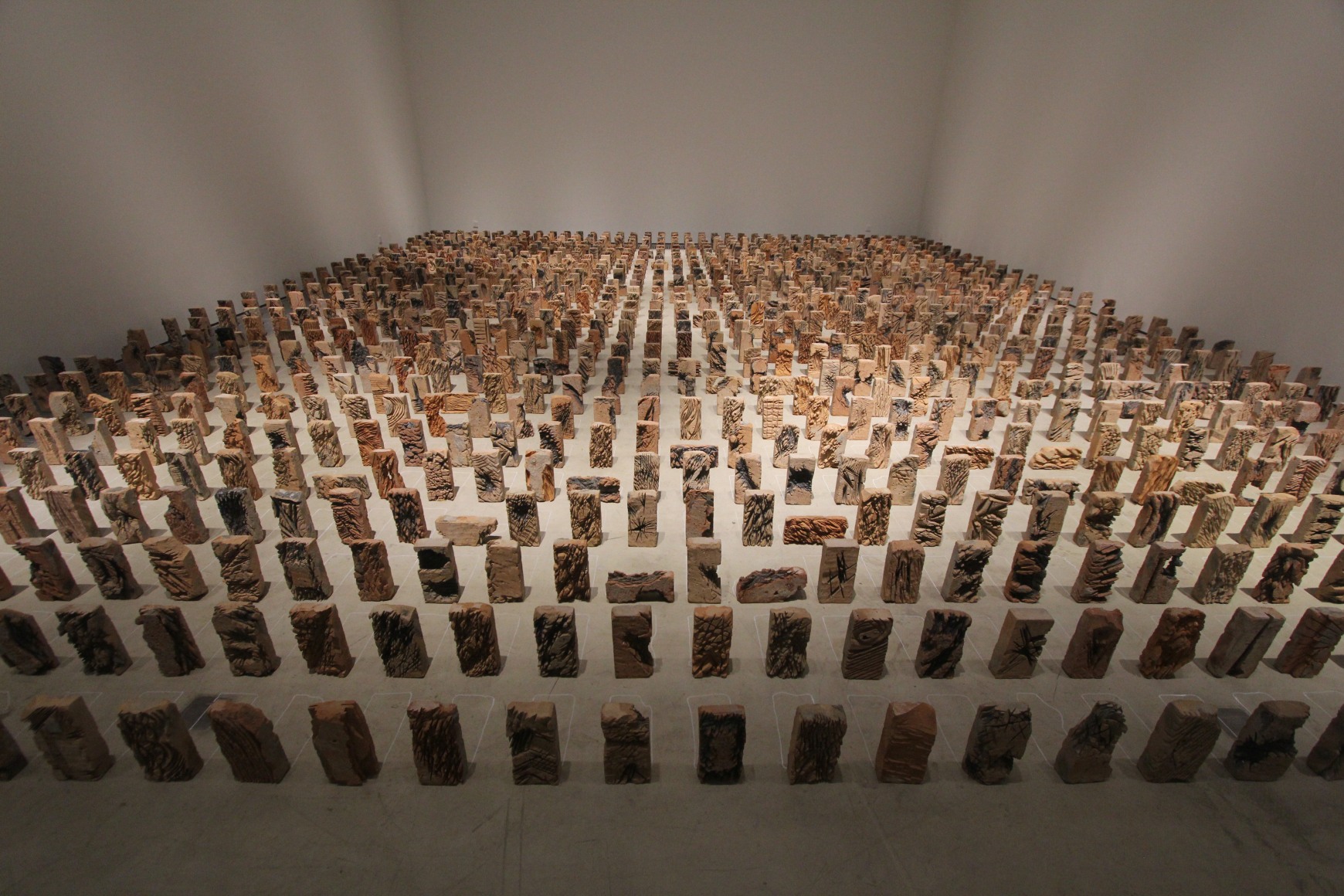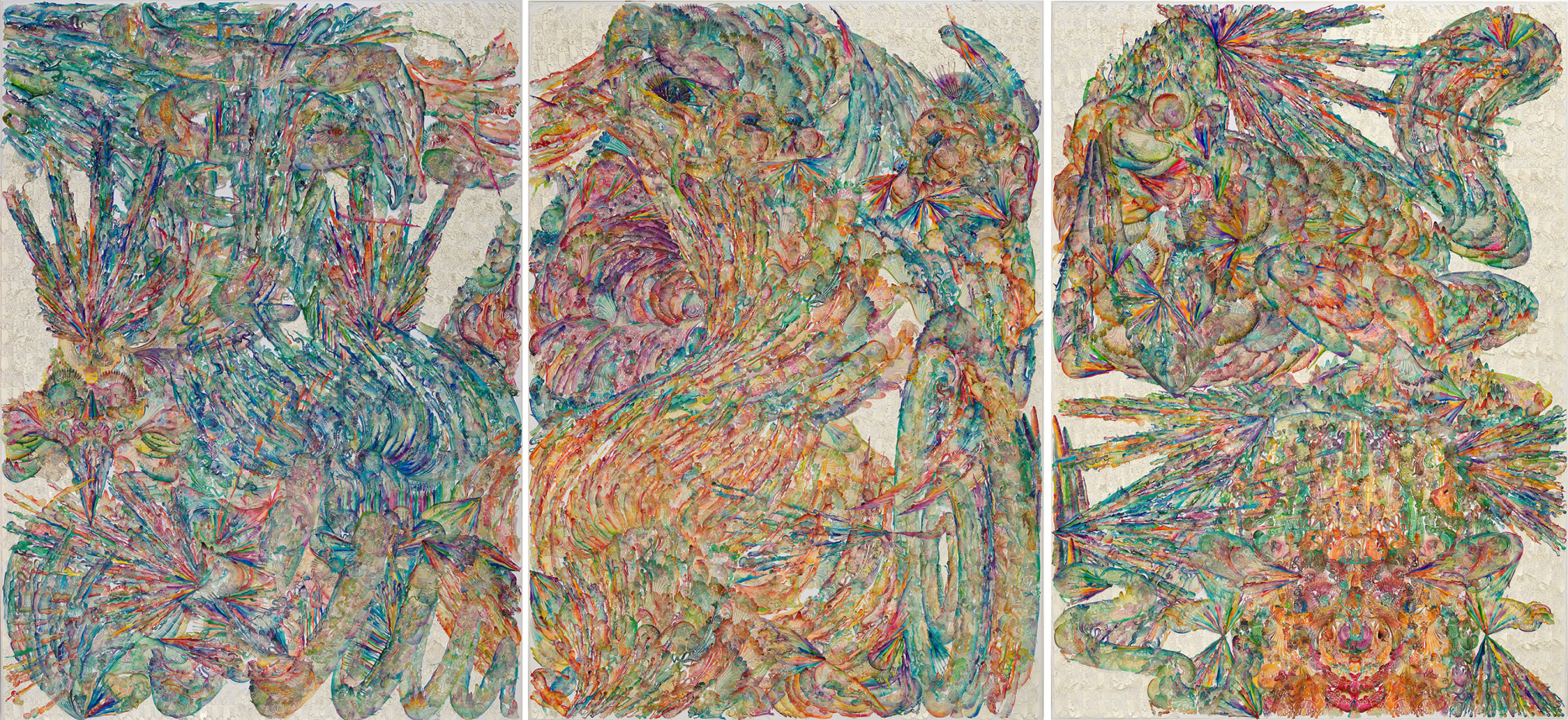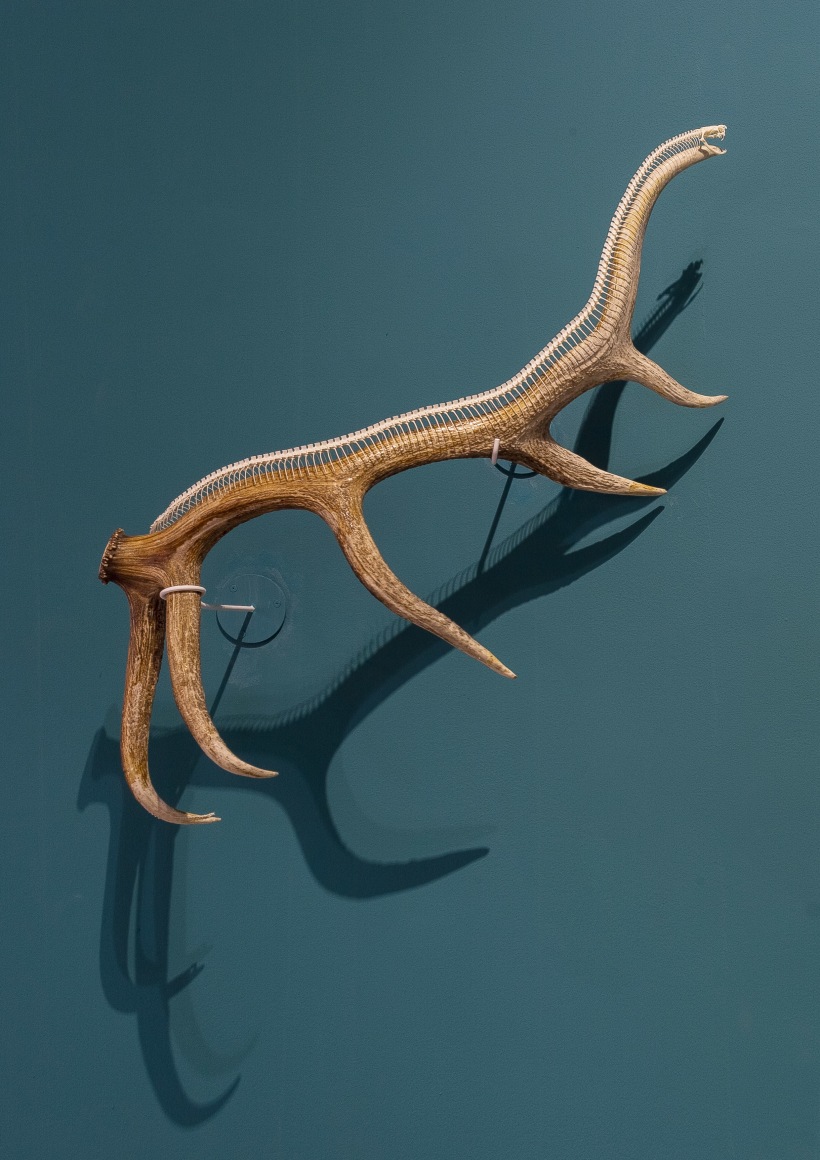Chambers Fine Art is pleased to announce the opening on May 14 of Ten Thousand Things: New Works by Wu Jian’an. For his 5th exhibition at Chambers Fine Art, Wu Jian’an continues his investigation of the arcane subject matter that has developed in tandem with the increasing complexity of his technical procedures. For his first exhibition of paper cuts at Chambers in 2006, Wu was responding to a contemporary social issue, the SARS crisis, but in recent years he has found inspiration in a wide range of classical and esoteric texts with a notable preference for the Chinese classic, Journey to the West. This fabulous tale provided imagery for his 2014 exhibition Transformation in which a new predilection emerged, the relationship between the one and the many, the individual and society.
The current exhibition derives its title from the influential book Ten Thousand Things: Module and Mass Production in Chinese Art by the German art historian Lothar Ledderose (2000), an investigation into the use of modular or standardized production systems throughout the history of Chinese art, in bronzes, porcelain, and architecture. While not referring to the book directly, Wu found a striking parallel between his own working method and Ledderose’s perceptive commentary on the procedures used by Chinese artists and artisans over thousands of years. As Wu explored the furthest reaches of which the paper cut was capable, a single unit or groups of related units still provided the building blocks from which his dazzling individual works or installations evolved.
This approach characterizes the four major works in Ten Thousand Things, each one conceived in a different medium. Like many of his earlier works, Ten Thousand Things consists of many thousands of small figures cut from paper dipped in wax although the overall effect is very different. Rather than assembling them into mask - forms teaming with life as in Three Thousand Years of Smiling Faces, Wu arranges them in much looser configurations. There are suggestions of human and animal forms, skeletons, birds, fish etc., but they appear only fleetingly, like images in clouds that disappear as soon as they have been identified.
In 500 Brushstrokes he moves into alien territory, ink painting on Xuan paper, but cuts the individual brush strokes from the sheet of paper and makes a collage from them on another sheet of paper. The artist has commented that unlike his paper cuts, each stroke is individual and that when they are reassembled, the form that emerges is not recognizable as a distinct image but rather as a unique whole.
In Shallow Mountain approximately 1500 old bricks are assembled on the gallery floor, each one carved and engraved by hand. Instead of being used as elements in a larger construction, each brick is given an individual identity, creating yet another consideration of the relationship between the individual and a collective identity. Big Skeleton utilizes conch shells as building blocks, each exquisite example of Nature’s diversity in the creation of identically organized forms further individualized with painted faces. In contrast with the other works in this exhibition, this accumulation of individualized forms results in the most distinct image of all, a monkey skeleton.
Wu Jian’an has emerged as one of the most challenging artists of his generation, developing a creative method that originated in the traditional craft of paper cut but that has grown significantly in complexity, enabling him to consider philosophical and political issues without abandoning the exotic visual appeal of his work.
前波画廊诚挚地宣布《万物:邬建安近作》展览将于2016年5月14日开幕。这是前波画廊第五次为他举办个展,邬建安持续不断地探索神秘主题,同时他的创作方式也变得更为成熟繁复。在其2006年在前波的首次个展中,他以剪纸为媒材反映了2002-03年发生的一个社会问题——非典型肺炎(SARS)的疫情。而近几年来,他开始从经典文学、神话传说及宗教文化中寻找灵感。其中中国古典文学《西游记》尤其令他着迷,为其2014年在前波的个展《白猿涅槃》提供了灵感源泉,也让他深入探讨了个体与整体之间、以及个人与社会之间的关系。
此次展览的标题来源于德国美术史学家雷德侯(Lothar Ledderose)2000年的著作《万物:中国艺术中的模件化和规模化生产》。此书依照中国艺术史的线索,深入分析了模件和标准化生产在铜器与陶瓷等工艺以及建筑中所起的作用。邬建安并没有直接借鉴雷德侯的著作,但发现了自己的创作方式与书中所分析的中国艺术家及工匠的创作过程之间的相似之处。邬建安不断突破剪纸的局限,用个体单位或相关单位的组合拼组成美轮美奂的作品及装置。
邬建安运用此模式为本次展览创作了四件重要作品,且媒材各不相同。与之前的一些作品相似,作品《万物》由上千个浸蜡镂空剪纸组成,但整体效果却相去甚远。在两年前创作的《三千年笑脸》作品中,他把成千上百个剪纸组合成一张脸的形象。虽然在作品《万物》中,个体依旧清晰可辨,但艺术家并没有刻意将这些个体组成一个有效的整体形象,而是组合成了一个混沌的烟雾,画面中若隐若现出一些人体部位、骷髅、鸟、鱼等,但在辨识它们的瞬间又烟消云散了。
在作品《五百笔》中,艺术家涉足到一个新的创作领域,即纸上水墨。先用毛笔在宣纸上涂画, 然后从宣纸上将独立的笔划剪下来, 并把这些笔划重新拼贴组合起来。据邬建安描述,被剪下来的每一笔都是一个独立的个体,当这些似乎相互冲突的个体被重新组合后,形成了一个新的整体,和他之前剪纸拼贴出具象形象不同的是,它没有一个可被辨识的整体形象。
《浅山》是由一千五百块旧砖在展厅地面上组成的大型装置,每块砖表面都由手工切割出各种深浅不一的沟痕。邬建安并没有把这些砖当作建筑的元素,而是赋予了每块砖一个独立的身份,再次引发了对个体与整体之间的关系的思考。而作品《大骨架》则运用海螺与贝壳为独立元素,并在每颗海螺或贝壳上都画上人脸,充分体现出大自然中即便同样的物种也各有自己的特质。这件作品以海螺贝壳为个体组成了本次展览中最清晰的图像,即一具巨大的猴骨架。
邬建安已成为同辈中最坚持自我挑战的艺术家之一。他将传统剪纸工艺推向了一个新的高潮,开创出更为复杂深奥的创作方式,使他既能深入地探究和思考哲学及社会问题,同时又保留了其作品神秘奇异的视觉感受。




